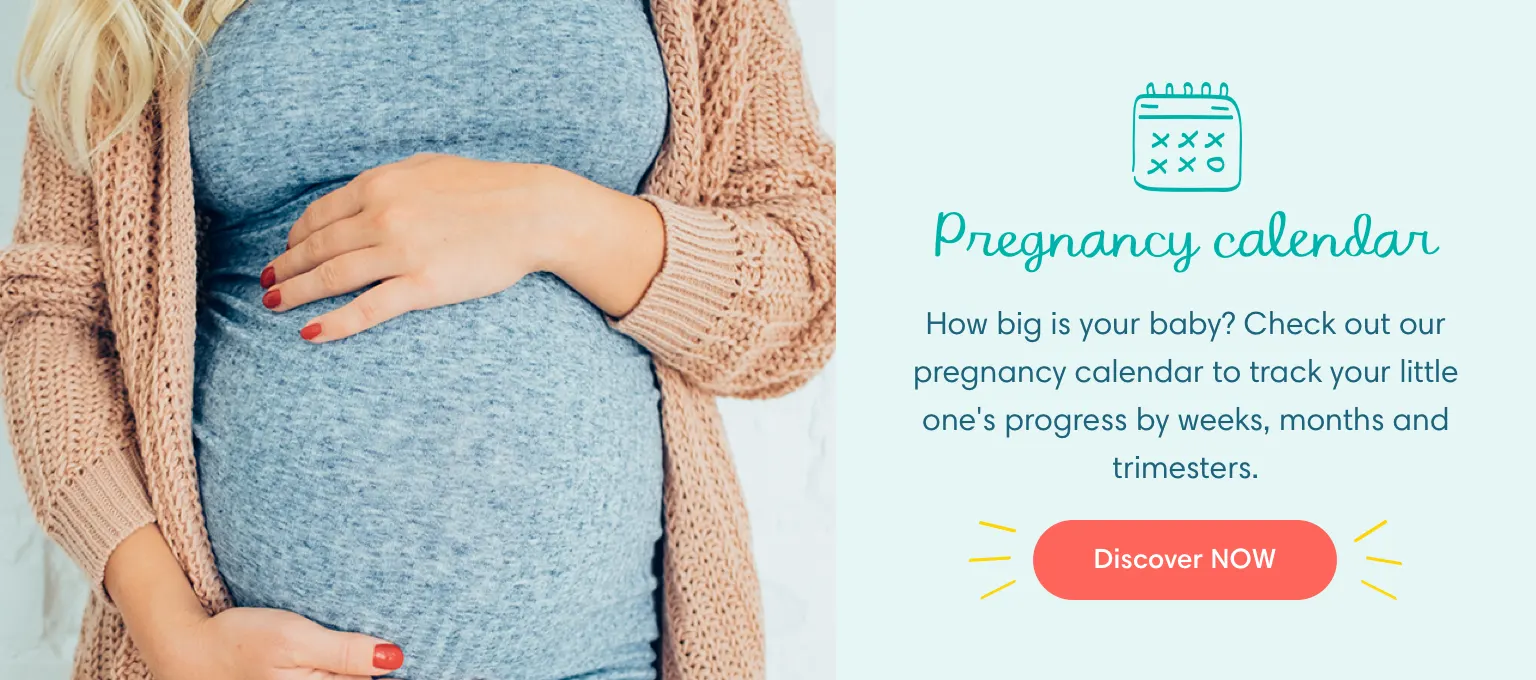Preparing for Labour and Birth
Preparing for the arrival of your new baby is an exciting time. But it often comes with some apprehension about the upcoming labour and birth. Preparing both physically and mentally for labour and birth can greatly help. We’ll cover everything from recognising the signs of labour to beneficial exercises and the power of mindfulness. So, keep reading to learn more about how to prepare for labour and childbirth. Remember, every labour journey is unique and it’s important to consult with your doctor or midwife throughout.
How Does Your Body Prepare for Labour?
Your body engages in a series of changes to prepare for the process of childbirth, also known as labour.
Pregnancy hormones play a crucial role in preparing your body for labour and childbirth. For example, the hormone relaxin allows the ligaments and joints of your pelvis to soften and stretch, preparing for childbirth. Furthermore, oxytocin, often referred to as the ‘love hormone,’ stimulates contractions during childbirth, helping your baby move through your birth canal.
Keep reading for some signs that indicate your body is preparing for labour.
Signs That Your Body Is Preparing for Labour
Keep an eye out for the following signs that your body is preparing for labour and birth:
One of the first signs is your ‘baby dropping’ or moving lower into your pelvis, this can occur a few weeks or a few hours before labour.
You might notice Braxton Hicks contractions during your pregnancy. These are ‘practice contractions’ and are not signs that you’re in labour. If your contractions become strong, regular and don’t ease when you change positions, move around or relax, you should contact your midwife or doctor as they might be true labour contractions.
Your body will also start to produce a mucus plug, or a ‘bloody show,’ which can be a sign your cervix is dilating in preparation for birth.
Some pregnant people also experience a burst of energy, often referred to as ‘nesting’, which can occur a few days before labour begins.
Finally, the process of labour is typically signalled by the onset of regular contractions along with water breaking.
Remember, each pregnancy and labour experience is unique, and these signs may vary from person to person. Always consult with your midwife or doctor if you have any concerns or if you feel labour has begun.
Exercises to Prepare for Labour
It’s beneficial to learn how to get your body and mind ready for labour and childbirth. Regular exercise is one of the key ways to ensure this readiness, and as long as your doctor says it’s ok, you can keep up with your regular daily exercise routine throughout pregnancy. Experts recommend a combination of pelvic floor exercises, aerobic activities and stretching routines for pregnant people:
Pelvic floor exercises. These exercises strengthen the muscles that you’ll use during labour and can help you control your body during the birthing process. They can also help with recovery post-birth.
Aerobic activities. Gentle aerobic exercises such as walking, swimming and prenatal yoga can help build your stamina, which you’ll need during labour. Always ensure the activity is safe for you and the baby by consulting your doctor or midwife.
Stretching routines. Stretching can help relieve pregnancy discomfort, increase flexibility and strengthen your muscles. Yoga and Pilates are excellent options as they also incorporate breathing exercises, which can be beneficial during labour.
When exercising, remember to warm up beforehand and cool down afterwards. Stay hydrated, avoid anything too strenuous or dangerous, and always listen to your body and rest if you need to. Regular exercise can have a significant positive impact on your labour experience. However, it’s important to consult with your doctor or midwife before starting or changing your exercise routine.
Pelvic Tilt Exercise
Here’s a simple exercise to do during pregnancy to help you prepare for labour and beyond:
Labour benefit:
Decreases the discomfort of back labour by helping the baby to move into an anterior position, with the back of the head towards your abdomen and the face towards your back.
Life skill:
Soothes lower backache. It also strengthens abdominal muscles and improves posture.
How it's done:
You can practice this pelvic tilt in many positions, such as lying on your back, standing with your back against a wall, sitting on a gym ball or on all fours. Here’s an example of how to do pelvic tilt exercises to help you prepare for labour, birth and beyond:
Stand with your back against a wall. Have your shoulders and bottom touching the wall, and notice how the small of your back is not against the wall.
Rock your pelvis toward your face, tightening your abdominal muscles and bottom; the small of your back should then be flat against the wall.
Rock your pelvis away from your face and relax your muscles; your back should be slightly arched.
Repeat Steps 2 and 3 ten times in a slow, rocking movement.
Mindfulness for Labour
The NHS recognises mindfulness as an effective and valuable technique for preparing for labour and birth. Mindfulness can help you stay calm, present and focused before, during and after the process of childbirth. Here are some ways to incorporate mindfulness into your birth preparation:
Breathing Practice. Deep and mindful breathing is a central part of mindfulness practice. It allows you to focus on the present moment and can be a vital tool for managing the pain of contractions.
Meditation. Setting aside time each day for meditation can help you cultivate a greater sense of calm and mentally prepare for birth. It can be as simple as sitting in a quiet place and observing your thoughts without judgment.
Body Scan. This practice involves paying attention to different parts of your body and any sensations you may feel. This can help you become more attuned to your body during childbirth.
Remember, like any new skill, mindfulness may require practice. So don’t worry if you find it difficult at first. Mindfulness can be a valuable complement to your birth preparation, helping you face the process with confidence and calm. In our section below, we’ll elaborate on some of these mindfulness techniques to help you deal with labour pain.
Tips for Labour Pain and Delivery
The techniques you learn in childbirth classes to lessen your discomfort during labour don’t stop working once you’ve given birth; they are life skills as well.
These methods, such as hypnobirthing combine positive visualisation, deep breathing and relaxation techniques, and can help you relax while breastfeeding, stay calm during the most trying moments of parenthood and even cope with life’s emotional and physical pains. Of course, your primary concern at the moment is making your labour more manageable. While these tips and techniques for labour and birth aren’t always guaranteed to make labour easy, they can certainly help. You may find that the strategies alone will ease the pain of your contractions. Or you may discover that they allow you to decrease the amount of medication you need or delay the start of an epidural anaesthetic, which may benefit your baby and your labour progress.
If you’re wondering how to prepare for the discomfort you might experience going into labour and during childbirth, here are a few of our top tips and skills to incorporate:
Visualisation for Labour
Labour benefit:
Visual imagery – creating a picture in your mind – helps you to stay calm during and between contractions.
Life skill:
Creates a sense of peace whenever you feel stressed.
How it's done:
You can practise visual imagery after progressive relaxation or on its own.
Close your eyes and picture your favourite place in the world.
Visualise the things that you'd be seeing if you were there; imagine the sounds you'd be hearing and ‘smell’ the scents around you.
Enjoy the beauty and serenity of your favourite place for as long as you like.
Breathing Tips for Labour and Birth
Labour benefit: Helps you to relax and focus during contractions.
Life skill:
Can be used to let off steam whenever you're feeling stressed, nervous or angry.
How it’s done:
Begin by relaxing your body and focusing on something visually: Either keep your eyes open and look at something or someone near you, or close your eyes and imagine something beautiful in your mind.
Take a big, cleansing breath, inhaling through your nose and exhaling through your mouth.
Continue breathing in through your nose and out through your mouth, about twice as slowly as you normally would.
Now begin to count as you inhale and exhale (‘In, two, three... Out, two, three’), or slowly recite calming words as you breathe in (‘I... am’) and out (‘staying... calm’).
End with another cleansing breath, then relax. You can use slow-paced breathing for an extended period of time – during meditation, for example – or briefly to offset stressful events.
Relaxation Tips for Labour and Birth
Labour benefit:
This ‘walk through your body’ helps you to remain relaxed between contractions and minimises pain during contractions.
Life skill:
Relaxes you whenever you're feeling tense.
How it’s done:
Get into a comfortable position, either lying down or sitting in a comfy chair.
Close your eyes and slowly take a couple of big breaths, inhaling through your nose and exhaling through your mouth (This is sometimes called a cleansing breath). As you do this, imagine you’re breathing in healing air and blowing out tension.
As you continue breathing slowly, contract and release the major muscles in your body, beginning at the top. Squeeze the muscles in your face for about five seconds, then relax them.
Raise your shoulders up toward your ears, hold for about five seconds, then drop them.
Squeeze the muscles in your arms and hands, hold, then release.
Contract your abdominal muscles, hold and release.
Contract your leg muscles, hold and release.
End with a couple of slow, deep breaths, again going in through your nose and out through your mouth and open your eyes. Your limbs should feel heavy and your entire body relaxed.
FAQS AT A GLANCE
When you begin preparing for birth is up to you, but many pregnant people start preparing during the second trimester. This includes both physical preparations, such as having an exercise routine, and mental preparations, like engaging in mindfulness and breathing practices. Starting early gives you plenty of time to strengthen your body and mind for labour and birth.
The Bottom Line
When preparing for labour and birth, remember that you’re achieving something very special. The best approach is one of openness and flexibility, combined with the knowledge and techniques shared here. Stay informed, practice your exercises and lean into mindfulness. Above all, always keep an open dialogue with your midwife and doctor to tailor the journey to your needs.
How We Wrote This Article The information in this article is based on the expert advice found in trusted medical and government sources, such as the National Health Service (NHS). You can find a full list of sources used for this article below. The content on this page should not replace professional medical advice. Always consult medical professionals for full diagnosis and treatment.
Join Pampers Club and get:






